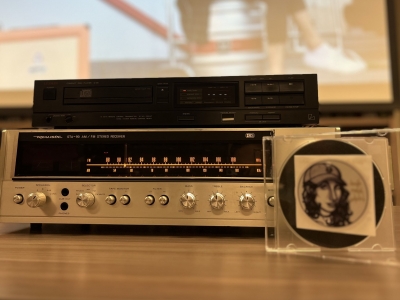
The Ottawa River shoreline near the Canadian Museum of History in Gatineau, the site of an ancient Indigenous burial ground excavated several times in the 19th century by Dr. Edward Van Cortlandt. Journalism professor Randy Boswell has written about the disturbing of this site and other Van Cortlandt-related activities in a six-part series marking the 175th anniversary of the Ottawa Citizen. (Photo: Randy Boswell)
Journalism professor Randy Boswell has published a six-part series of essays in the Ottawa Citizen marking the newspaper’s 175th anniversary this year.
Each part of the series explored a different aspect of the life of 19th-century Ottawa physician Dr. Edward Van Cortlandt, whose diverse activities as a public health officer, naturalist, amateur geologist, curio collector, coroner and proto-archaeologist were closely chronicled by the Citizen during his lifetime and had lasting effects on the history of the national capital.
Boswell, a former Citizen reporter and editor, helped the newspaper launch its anniversary year in January with a lengthy feature exploring the publication’s 1845 origins as the Bytown Packet and important role in the city’s evolution. The Citizen is the oldest continuously operating business in Ottawa.
Boswell has also been researching and writing about Van Cortlandt’s life and times for many years. As a Citizen reporter, Boswell discovered long-forgotten newspaper articles that shed fresh light on the location and significance of an ancient Indigenous burial ground in the heart of Ottawa-Gatineau, which Van Cortlandt excavated on at least three occasions in the mid-1800s.
In recent years, Boswell teamed with archaeologist Jean-Luc Pilon — a now-retired curator from the Canadian Museum of History and an adjunct professor at Carleton — to publish a series of scholarly articles on the burial place and its implications for understanding Ottawa-Gatineau’s ancient history.
The final article in Boswell’s Citizen series, published Aug. 17, was about Van Cortlandt’s excavations of that burial site near the present-day Canadian Museum of History, which have been described as acts of “grave-robbing” by local Indigenous leader Gilbert Whiteduck, a former chief of Kitigan Zibi Anishinabeg First Nation and a distinguished graduate of Carleton’s Social Work program.
Once known as “Van Cortlandt’s Ossuary,” the shoreline site highlights a range of complex issues in local history and archaeology, and is now the focus of long-term commemorative planning involving the National Capital Commission, Ottawa-area Algonquin communities and other stakeholders.
Tuesday, August 18, 2020 in General, Journalism News
Share: Twitter, Facebook



